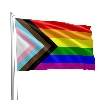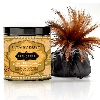No products
What does it mean to be polysexual?
Published : 2022-10-25 11:50:01
Categories :

Someone who is polysexual is sexually attracted to people of various genders. The definition of polysexuality overlaps with omnisexuality, bisexuality, and pansexuality. Some people consider polysexuality an umbrella term that encompasses other queer identities.
How does polysexuality relate to other sexualities?
You might be curious to know if there is a difference between being polysexual and being omnisexual, bisexual or pansexual. Let's do this:
Polysexual vs. pansexual
While the prefix “poly-” means “many”, the prefix “pan-” means “all”. Being attracted to many genres doesn't necessarily mean you're attracted to all genres. For example, you may be attracted to women and men, but not to non-binary people. You may be attracted to women and non-binary people, but not men.
Pansexual people, however, are attracted to people of all genders. Many pansexual people say that gender does not influence whether they are attracted to someone or not. So while pansexual people technically fall under the umbrella of polysexuals – because they are really attracted to people of various genders – not all polysexual people are pansexual.
Polysexual vs. omnisexual
The word omnisexual is similar to pansexual. The prefix “omni-” refers to the fact that omnisexual people are attracted to people of all genders. Some people prefer the word “pansexual” to the word “omnisexual” and vice versa, while others refer to themselves using both terms. One can identify as omnisexual and polysexual at the same time.
Polysexual vs. bisexual
The definition of polysexual is similar to the definition of bisexual. Many people believe that “bisexual” means you are only attracted to two genders – but for many decades, the bisexual community has described orientation as being attracted to two or more genders. The Bisexual Manifesto, which was first published in the year 1990, pointed out that bisexual people can be attracted to more than two genders: Functionally, “two or more” means “multiple” genders.
In other words, polysexual can mean the same thing as bisexual. However, people may want to opt for one label over the other for their own personal reasons. Bisexuality and polysexuality can also be seen as umbrella terms that include pansexuality and omnisexuality. Someone can identify as bisexual and polysexual at the same time.
Is polysexuality the same thing as polyamory?
No! Polysexuality is about who you're attracted to, while polyamory is about how you structure your romantic relationships. Polyamory is a type of consensual non-monogamy. In polyamory, people have (or are open to having) intimate relationships with multiple people, with the consent of everyone involved.
What is it like to be polysexual in practice?
In practice, being polysexual can look a lot like being bisexual or pansexual. You don't need to have or have had relationships with people of different genders to know that you are polysexual. It's not about your sexual history - it's about who you're attracted to.
What does it mean to be polysexual for dating or relationships?
Being polysexual won't necessarily compromise your relationship - unless your partner doesn't accept your sexual orientation. A polysexual person can be happy in monogamous relationships. This need not change when they "leave" unless they want it to.
Remember that dating someone of the “opposite” sex does not make you heterosexual. A woman can date another woman and be polysexual; a woman can date a man and be polysexual. It's not about who you're dating, but who you're attracted to.
However, some challenges may arise. If you are polysexual and in a monogamous relationship, others may assume you are gay or straight. They may not see your polysexuality as valid or real. These assumptions can be harmful.
How do you know which term fits your experience?
There is no test to find out if you are polysexual. If the definition seems to apply to your experience, you can use the term to describe yourself! You can always try different labels and see which one fits best. Journal about it, think about it, talk to friends – allow yourself to explore what it means to be polysexual and if the term applies to you.
What if this changes?
It's okay to change how you identify yourself. At one point, you may find that “bisexual” suits you. Over time, you may prefer the term “polysexual” or “pansexual”. There is nothing wrong with changing the term you identify with.
You may also find that your attraction changes over time. Some people can take a while to realize who they are attracted to. Others may find that their attraction to certain genres fades over time. Although you cannot consciously change your orientation, you may find that your feelings change spontaneously.
How can you help others understand polysexuality?
While you shouldn't feel pressured to come out, you may want to share your guidance with people close to you. Many people are not familiar with the term “polysexual”. To help them understand, you can submit an educational article (like this one!) Explain what this means to you. You shouldn't feel obligated to talk about your romantic and/or sexual experiences (but you can if you want to).
Set limits on what you liked and didn't like to talk about. Let them know if you need them to support you in a specific way (e.g. by being there when you come out to others or listening to you when you need to talk).
How can you support polysexual people in your life?
Many people believe that polysexual people do not exist. As you can imagine, this can be harmful for polysexual people. Some people may even be met with disbelief and dismissive comments from other LGBTQIA+ people. Choosing your words carefully and avoiding stereotypes can help prevent this. Here are some tips to support polysexual people:
⦁ Avoid asking doubtful questions like “Are you sure?” and "But how do you know?" as this may imply that they are confused or incorrect.
⦁ Do not assume that someone's sexual orientation is based on the sex of the person they are dating or married to. Remember that someone in an apparently “straight” relationship could be polysexual, queer, bisexual, pansexual, or anything else.
⦁ Avoid asking probing questions about sexual experiences unless they express an interest in talking about it.
⦁ Give them space to talk about their passions/relationships/experiences without questioning them about sexuality.
⦁ Don't share them with people – that is, don't tell other people they are polysexual unless you have permission to do so.
⦁ Use inclusive language. Do not use “gay” as a generic term to refer to all LGBTIQA+ people.




